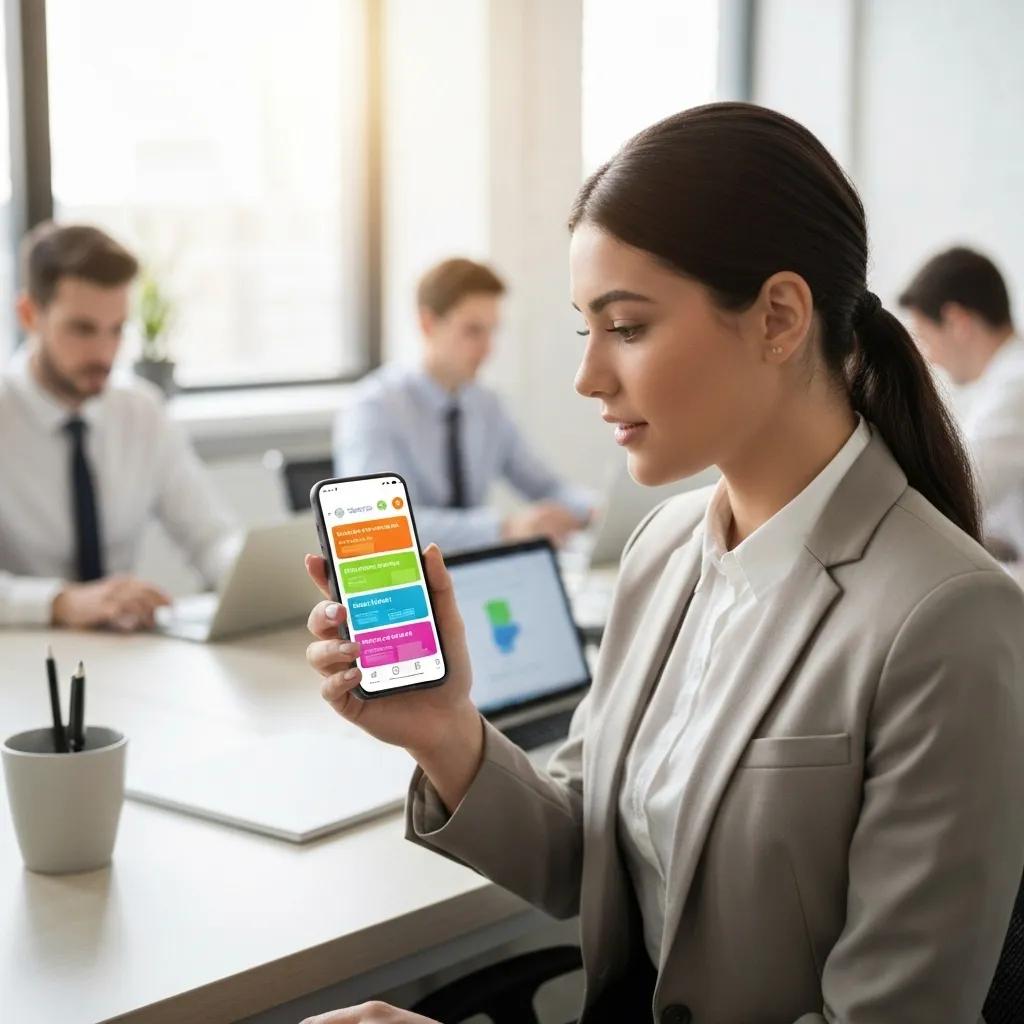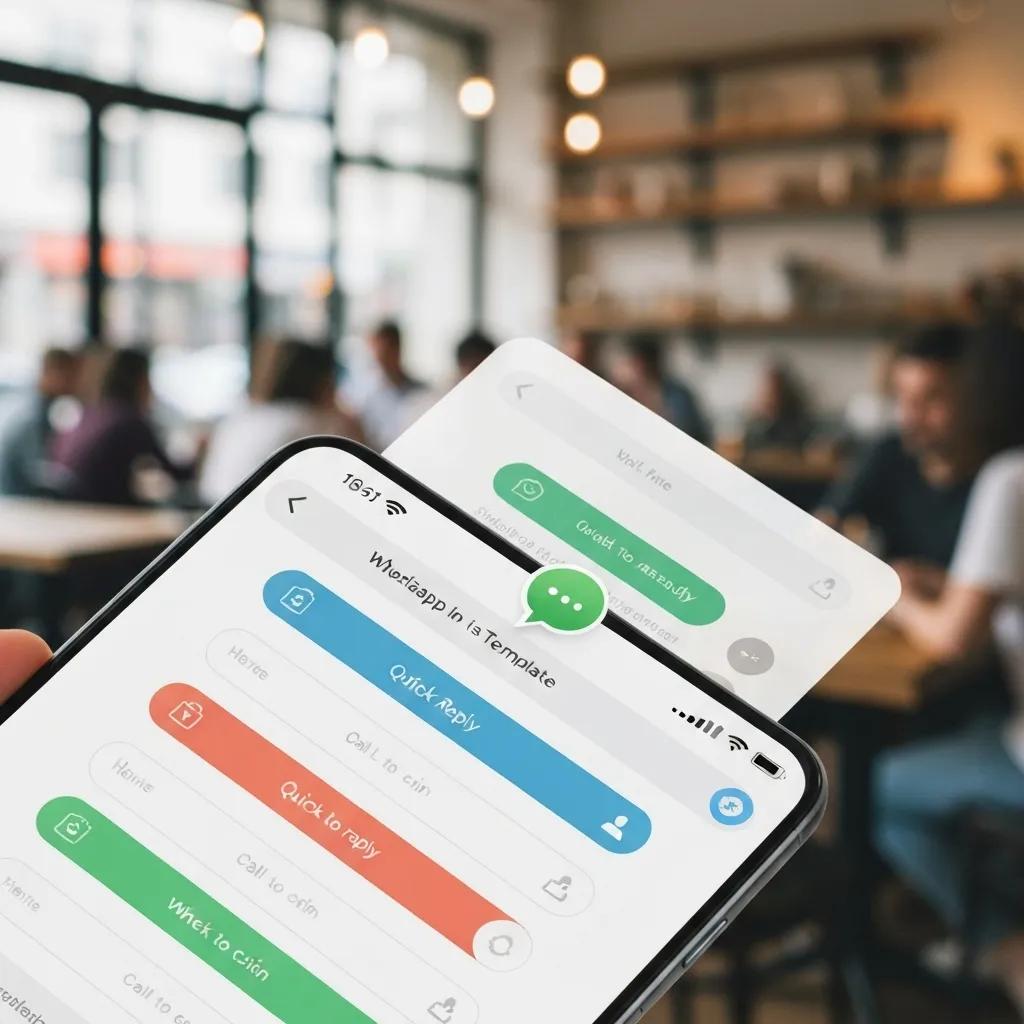How Customizable Are WhatsApp Templates in Go High Level?

Unleash the Power of Customizable WhatsApp Templates in Go High Level
WhatsApp messages see up to 98% open rates compared to 20% for email, so mastering how customizable the WhatsApp templates available in Go High Level for businesses can transform client engagement and recurring revenue.
In this guide, you’ll learn core template categories, advanced personalization with custom variables, interactive features, AI-powered automation, white-label strategies for SaaS agencies, compliance essentials, and reputation-boosting review requests. By the end, you’ll know how Go High Level WhatsApp integration empowers your agency to deliver tailored messaging solutions and scale recurring income.
What Are the Core WhatsApp Template Categories in Go High Level?

Go High Level segments WhatsApp templates into three primary categories—Marketing, Utility, and Authentication—to align message structure with business use cases. Each category defines header, body, footer, and interactive elements suited for a specific communication objective.
| Category | Purpose | Key Features |
|---|---|---|
| Marketing | Promote offers and announcements | Rich media support, CTAs, quick replies |
| Utility | Provide information or updates | Text-focused, custom variables, dynamic fields |
| Authentication | Verify identity or secure transactions | OTP codes, time-sensitive variables |
This categorization ensures you select the right template type before adding variables, buttons, or AI logic to match client workflows.
How Do Marketing, Utility, and Authentication Templates Differ?
Marketing templates drive conversions by packaging promotions with images, action buttons, and urgency cues. Utility templates focus on factual updates like appointment reminders or shipping alerts. Authentication templates embed one-time codes and time windows for secure logins. Understanding these distinctions lets you optimize message tone and interactive elements for each client scenario.
Which Template Categories Best Suit Your Business Needs?
- Agencies offering promotions and upsells benefit most from Marketing templates with CTAs.
- Appointment-based businesses maximize open rates with Utility reminders.
- Financial or healthcare clients require Authentication templates for secure OTP delivery.
Match template categories to each client’s conversion funnel to boost engagement and retention.
How Can You Personalize WhatsApp Templates Using Custom Variables in Go High Level?
Go High Level allows dynamic personalization through custom variables that inject contact and appointment details directly into template bodies. This mechanism increases relevancy and trust with each recipient.
What Are the Most Effective Custom Variables to Use?
- {{contact.name}} inserts the recipient’s first name for familiarity.
- {{contact.company}} highlights organization context in B2B outreach.
- {{appointment.date}} and {{appointment.time}} confirm scheduled sessions without manual edits.
- {{order.id}} and {{shipment.date}} add transactional precision.
How Do Dynamic Fields Enhance Template Relevance?
Dynamic fields update content in real time based on triggers and contact behavior. When a custom field like populates automatically, clients receive timely reorder prompts. This mechanism reduces manual updates and fosters contextual messaging that adapts to each client lifecycle stage.
How to Insert and Manage Custom Variables in the GHL Template Builder?
- In your Go High Level dashboard, navigate to Settings > WhatsApp > Templates.
- Click Create Template, select category and language.
- In the body section, type {{ and choose from the dropdown list of available custom fields.
- Save and preview the template to verify dynamic insertion.
- Manage variables centrally under CRM > Custom Fields, adding or editing entries as client data evolves.
These steps ensure your templates always reflect the latest customer information without extra effort.
What Interactive Features Can You Add to Go High Level WhatsApp Templates?

Interactive elements like quick replies and call-to-action buttons transform passive messages into two-way conversations, driving clicks and conversions directly within WhatsApp.
How Do Quick Replies and Call-to-Action Buttons Work?
Quick replies appear as tappable options beneath message text, allowing contacts to respond with a single click. Call-to-action buttons can launch URLs, initiate phone calls, or trigger specific GHL workflows. This direct interaction mechanism streamlines engagement and guides users toward desired actions without leaving the chat.
What Are the Best Practices for Using Interactive Elements?
- Limit buttons to two per message to avoid cognitive overload.
- Label options using clear verbs like “View Offer” or “Confirm Appointment”.
- Prioritize primary actions (e.g., “Pay Now”) and place secondary actions (“Support”) below.
- Test button placement on mobile to ensure legibility across devices.
Applying these practices boosts click-through rates and ensures interactive features deliver measurable results.
How to Customize Buttons for Different Business Scenarios?
- E-commerce: “Shop Now”, “Track Order”
- Service Business: “Reschedule”, “Cancel”
- Financial Services: “View Statement”, “Contact Advisor”
- Event Management: “RSVP”, “View Map”
How Does Go High Level Automate WhatsApp Template Messaging with AI Integration?
Go High Level’s AI integration automates personalized outreach by injecting algorithm-generated content and decision logic into WhatsApp workflows. This technology combines triggers, actions, and AI chatbots for hands-free, context-aware messaging.
What Are Go High Level Workflows and How Do They Automate WhatsApp Messages?
Workflows in GHL define sequences of triggers (e.g., form submission, tag addition) and actions (e.g., send WhatsApp template, wait, update field). By creating a workflow that sends a customized template when a lead fills a form, you automate follow-up without manual intervention. This process streamlines lead nurturing and reduces response time.
How Can AI Chatbots Enhance WhatsApp Template Responses?
AI chatbots analyze incoming messages, detect intent using NLP, and reply with context-aware templates or custom AI-generated text. For example, a chatbot can qualify leads by asking budget and timeline questions automatically, then forward high-potential prospects to your sales team. This mechanism frees up resources and accelerates qualification.
What Is Hyper-Personalization with AI-Generated Content in WhatsApp Templates?
Hyper-personalization uses AI models to craft unique message variations based on past interactions, demographics, and predicted preferences. Instead of static variable replacement, AI generates dynamic copy—like product recommendations or celebration greetings—that resonates with each contact’s profile. This level of customization elevates engagement beyond traditional merge tags.
How to Implement Omnichannel Drip Campaigns Using WhatsApp Automation?
- Build a multi-step workflow starting with email or SMS.
- Embed WhatsApp templates at key touchpoints, such as post-open or link-click triggers.
- Use AI-driven decision splits to route contacts to channels based on their engagement.
- Monitor response metrics and adjust timing or content dynamically.
Omnichannel automation ensures prospects receive the right message via the preferred channel at the optimal moment.
How Can SaaS Agencies Leverage White-Label Go High Level WhatsApp Templates for Recurring Revenue?
Agencies can resell Go High Level WhatsApp and AI integration as a branded service, establishing a subscription-based model that generates stable, long-term income.
What Are the Benefits of White-Labeling WhatsApp and AI Services?
- Strengthened brand authority by presenting solutions under your agency’s logo and domain.
- Increased client retention through embedded communication tools within your service suite.
- Diversified revenue streams with monthly fees tied to message volume or feature tiers.
- Competitive differentiation by offering advanced AI chatbots and automation as part of your package.
How to Price and Package WhatsApp Template Services for Resale?
| Package Tier | Features Included | Monthly Fee |
|---|---|---|
| Basic | 10 Templates, Standard Variables, Quick Replies | $99 |
| Professional | 25 Templates, Dynamic Fields, 2 Interactive Buttons | $199 |
| Enterprise | Unlimited Templates, AI Chatbot Integration, Bulk Msg | $399 |
How Does Customization Help Agencies Win and Retain Clients?
Offering tailored templates and AI-driven messaging demonstrates deep understanding of each client’s audience. Custom copy, branded media, and interactive CTAs deliver measurable conversion lifts, solidifying your agency’s role as a strategic partner rather than a one-off vendor.
What Are Effective Bulk Messaging and Segmentation Techniques?
- Segment contacts by tag (e.g., high-value vs. new leads) to tailor message cadence.
- Use dynamic scheduling to send bulk templates at local timezones.
- Monitor quality ratings to avoid mass message blocks.
- Combine segmentation with AI-driven content tweaks to maintain relevance at scale.
These techniques enable agencies to manage dozens of campaigns simultaneously without sacrificing personalization.
What Compliance and Best Practices Should Agencies Follow for WhatsApp Template Customization?
Maintaining compliance with Meta’s guidelines and user consent rules ensures templates pass approval and sustain deliverability across client accounts.
How Does the WhatsApp Template Approval Process Work?
- Submit templates in the WhatsApp Business Platform console, specifying category, header type, body, and buttons.
- Meta reviews content against policy—approval often takes 12–24 hours.
- Templates are either approved, rejected with feedback, or paused for edits.
- Revise and resubmit rejected templates promptly to maintain campaign schedules.
What Are the Key WhatsApp Business Platform Policies for Agencies?
- Prohibit promotional content in utility templates—use Marketing category for offers.
- Avoid all-caps text and excessive emojis to comply with readability standards.
- Do not share personal data without explicit user consent.
- Limit message frequency to prevent spam and maintain high quality ratings.
How to Maintain High Template Quality Ratings and Avoid Disabling?
- Track read, reply, and complaint metrics in the Business Manager dashboard.
- Pause or revise templates with low engagement below 20% open rates.
- Encourage opt-in with clear subscription descriptions.
- Regularly clean contact lists to remove invalid or inactive numbers.
What Are Best Practices for Opt-in and User Consent in WhatsApp Marketing?
- Use double opt-in via web forms or SMS confirmations to verify permission.
- Document consent timestamps and source channels in your CRM.
- Offer easy opt-out options within messages using interactive buttons.
- Include clear privacy disclosures outlining data use and frequency.
How Can You Use Go High Level WhatsApp Templates to Send Review Requests and Manage Reputation?
What Are the Steps to Create Review Request Templates in Go High Level?
- Navigate to Templates, choose Service category.
- Name your template “Review Request” and select language.
- In the body, add {{contact.name}} and link to your review platform.
- Insert a quick reply button labeled “Leave a Review”.
- Submit for approval and test with a sample contact.
A straightforward template ensures clients receive a seamless prompt to share feedback.
How to Automate Single and Bulk Review Requests via WhatsApp?
- For single requests, trigger a workflow after service completion to send the review template immediately.
- For bulk requests, schedule a bulk message action within a workflow that filters contacts tagged “Recent Purchase.”
- Use AI-generated gentle follow-up reminders after two days to boost response rates.
Automation removes manual outreach barriers and consistently drives reviews.
What Are the Benefits of Using WhatsApp for Reputation Management?
- Instant visibility: High open rates ensure review links reach customers.
- Personalized outreach: Using {{service.date}} and {{agent.name}} increases trust.
- Real-time responses: Contacts can ask questions directly, enabling quick resolution.
- Platform versatility: Direct links to Google, Trustpilot, or custom portals streamline the process.
Double My Leads empowers SaaS agencies to unlock the full potential of Go High Level WhatsApp integration through white-label solutions, robust automation, and AI-powered personalization. By mastering template categories, interactive features, compliance best practices, and reputation management, your agency can deliver measurable results and secure ongoing revenue. Explore how our dedicated services can accelerate your clients’ engagement and scale your business growth with tailored WhatsApp communication strategies.

